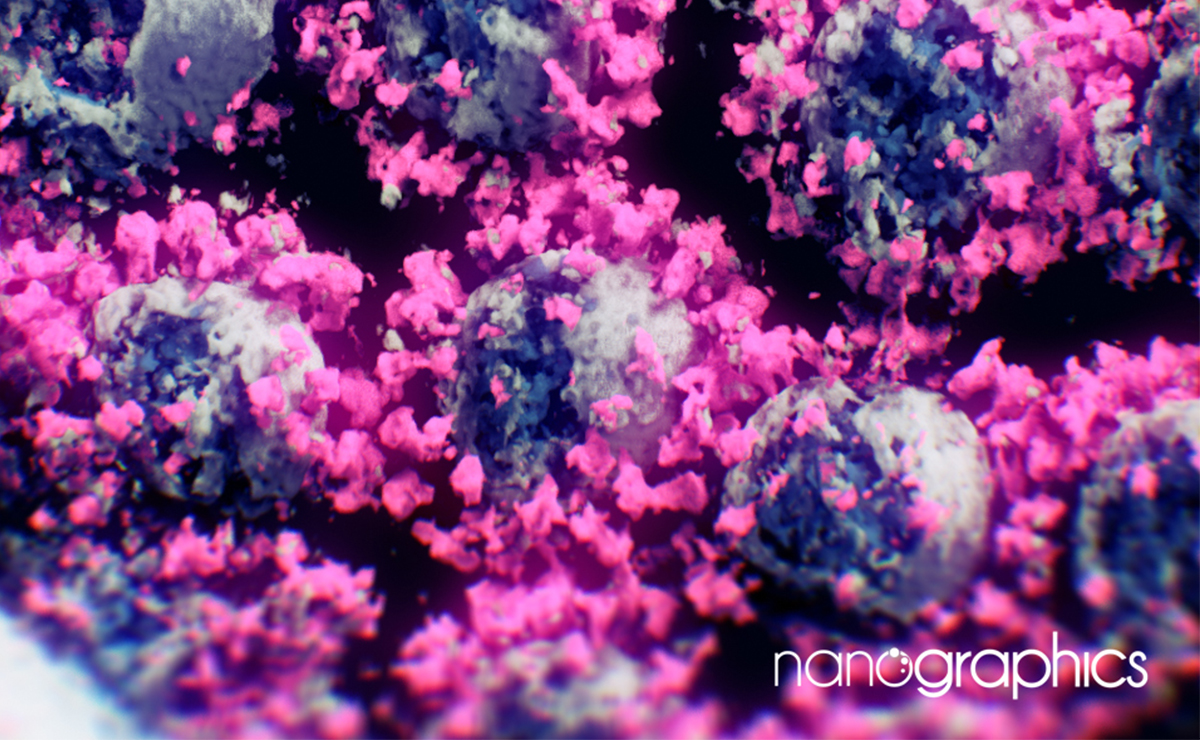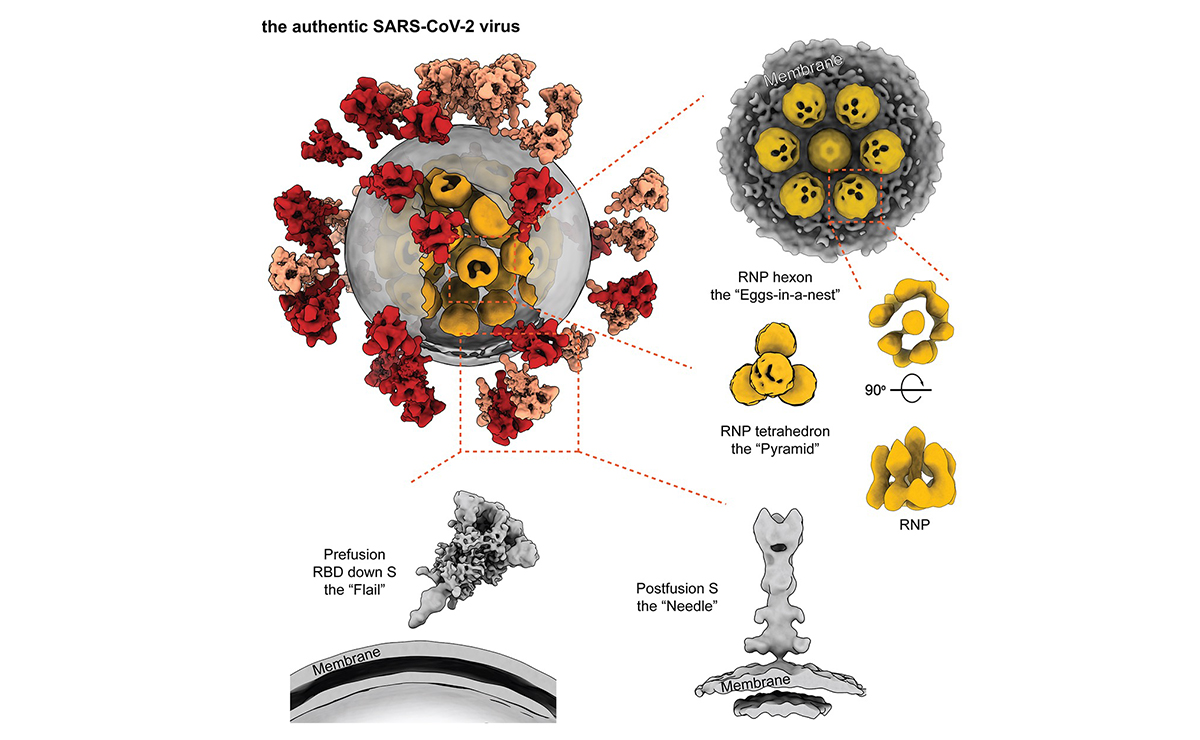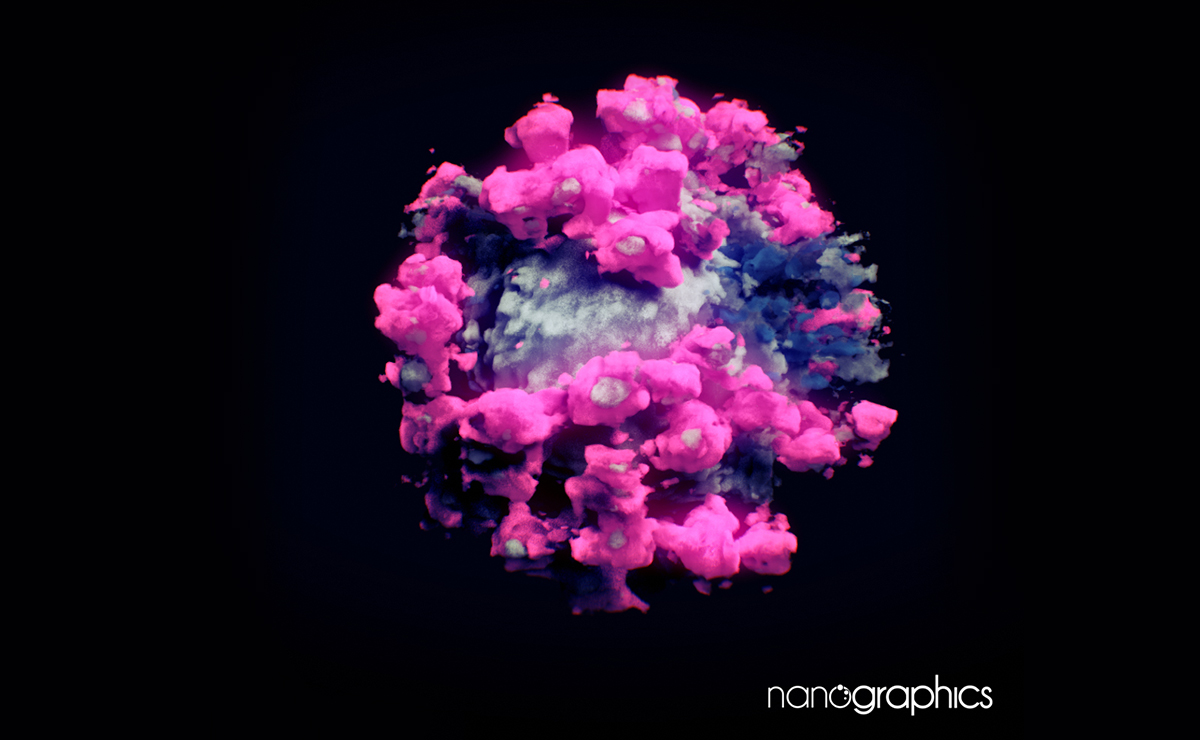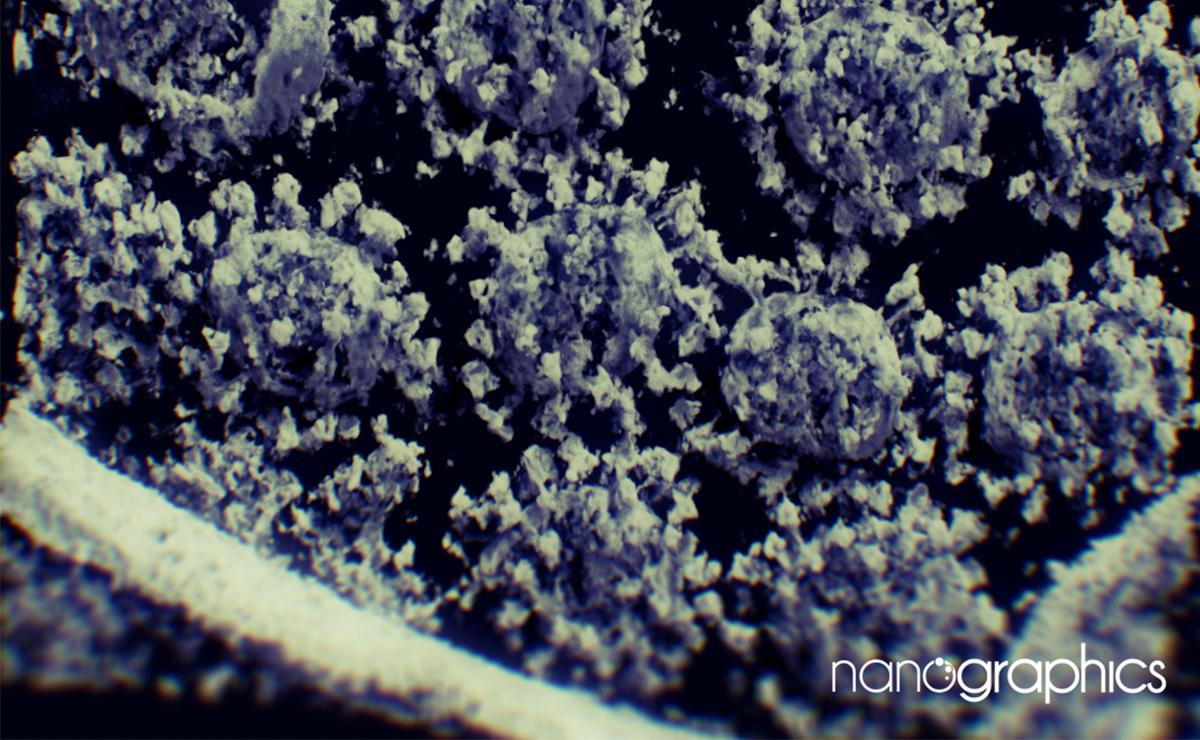Early details on the molecular architecture of the COVID-19 virus were key for vaccine developers in helping outline the shapes of its rich genome, flailing spikes, and sugar shields.
In late 2020, a group led by Professor Sai Li at Tsinghua University detailed the molecular shape of SARS-CoV-2 at subnanometer resolutions1. In the process, Li’s team, revealed more about the virus’s exceptional infection and cloaking mechanisms, and added to the early series of structural studies supporting vaccine development.
To do this, Lanjuan Li’s group from Zhejiang University, Hangzhou, first selected a viral strain isolated from a patient in her early 20s for advanced imaging. The strain made its way to Tsinghua’s best electron microscope, after it propagated faster than any other strains in Lanjuan Li’s lab. Li’s team then flash froze millions of intact virions for imaging, 2,294 of which were eventually selected for structural work, producing what was perhaps the largest cryo-electron tomography (cryo-ET) dataset of SARS-CoV-2 at the time.

See SARS-CoV-2 in 3D with the help of cryo-electron tomography by Sai Li’s team at Tsinghua University, graphics company Nanographics GmbH, and the King Abdullah University of Science and Technology in Saudi Arabia. (Credit: Nanographics GmbH/https://https://nanographics.at/projects/coronavirus-3d/ Creative Commons Attribution 4.0 International License: https://creativecommons.org/licenses/by/4.0/)
Infection advantage
Most structural studies focused on the ‘spike’ protein that studs SARS-CoV-2’s envelope and helps the virus to fuse with healthy cell membranes, allowing the virus to enter and replicate, explains Li. This spike is the target of most vaccines, so the more vaccine developers know about how to create vaccines that bind effectively to its structure the better.
Li’s team showed these spikes moving exceptionally flexibly around their ‘stems’ in their prefusion state, which precedes their interaction with a cell’s receptor. The finding mirrored two other studies that came out at roughly the same time, says Li, who works within Tsinghua’s School of Life Sciences.

SARS-CoV-2 was shown by Tsinghua researchers to move to an up to 40-degree angle to the virus envelop (bottom left), which is an unusual amount of mobility. The ribonucleoprotein packaging of the virus was also the first to be documented of any positive-strand RNA virus, with hexagon and pyramid assemblies both revealed.
The movement may be contributing to the coronavirus’s exceptional infectiousness. “We suspect the spike benefits from mobility in exploring for another cell’s receptor, which would help to make it exceptionally efficient at attaching to cells and spreading in the body,” he explains. Most enveloped viruses, have a more stable prefusion spike that moves more like a ‘loaded spring’, he adds.
Mobility probably also means increased fragility, Li continues, and some virus purification methods used to make whole virus vaccines could lead to the snapping off of all or part of the spike. A so-called ‘bald’ virus particle wouldn’t be effective as a vaccine, Li says, as it would stimulate low neutralising antibody activity.
Sugar shield and neat RNA
In addition, the team documented the spike’s dense layer of sugars, called glycans. Li says these might be shielding the virus from recognition by the immune system. Mass spectrometry analysis showed that native glycans were similar to those seen in recombinant vaccines, such as the Moderna and Pfizer vaccines, which, using mRNA, create SARS-CoV-2 spike proteins within the body. Manipulation of these glycan layers could be a potential pathway to improvement, says Li.
The Tsinghua team also demystified how coronaviruses pack in the largest genome of all RNA viruses. And Li’s study has also shed light on how positive-strand RNA viruses package their ribonucleoprotein in general.

An image of SARS-CoV-2 created using cryo-electron tomography by Tsinghua, and cleaned up and colored by Nanographics GmbH and the King Abdullah University of Science and Technology in Saudi Arabia. (Credit: Nanographics GmbH/https://https://nanographics.at/projects/coronavirus-3d/ Creative Commons Attribution 4.0 International License: https://creativecommons.org/licenses/by/4.0/)
Positive-strand RNA viruses release their genomes into healthy cells where the genetic information can also act as mRNA that the host cell translates into viral proteins. In SARS-CoV-2, Li’s team was able to document how the hexagonal or pyramid-like tetrahedral assemblies of ribonucleoproteins are able to neatly nest inside the viral envelope. Li refers to the virus as “a genius architect”.
Vaccines and validation
Structural studies have been key to vaccine development throughout the pandemic, says Li. But the speed of vaccines production has meant that rapid validation from teams such as his have been vital.
Luckily, Li’s group already had expertise in inactivation and purification of coronaviruses alongside Lanjuan Li’s group before the most recent outbreak began. Tsinghua was also quick to fund the time-sensitive work.

“The intact SARS-CoV-2 virus structures by many groups around the world provided vital structural and statistical references for major vaccines that went into development,” Li says. “Happily, the conclusions about spikes are very consistent. I believe a series of 2020 papers together were able to confirm what the bona fide SARS-CoV-2 virus looks like.”
References
Yao, H. et al Molecular Architecture of the SARS-CoV-2 Virus Cell 183(3), 730-738 (2020) DOI: 10.1016/j.cell.2020.09.018